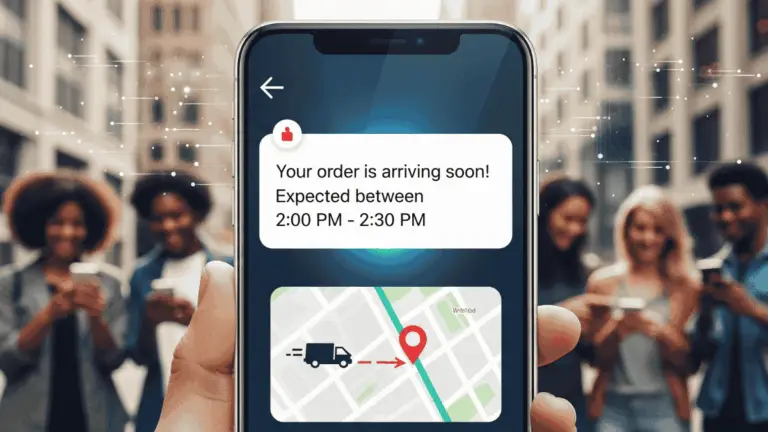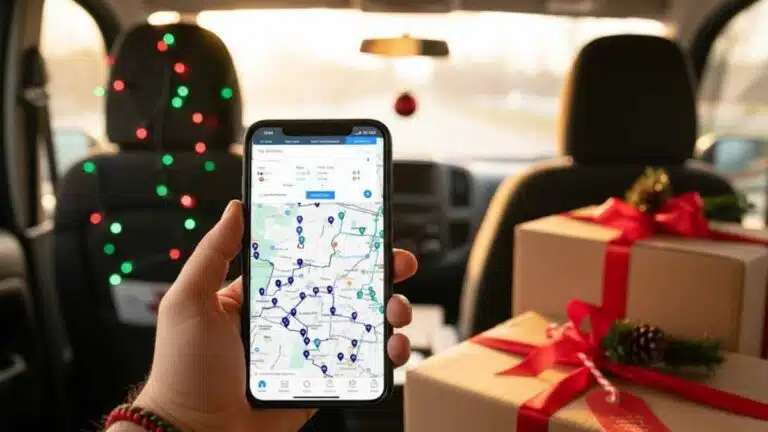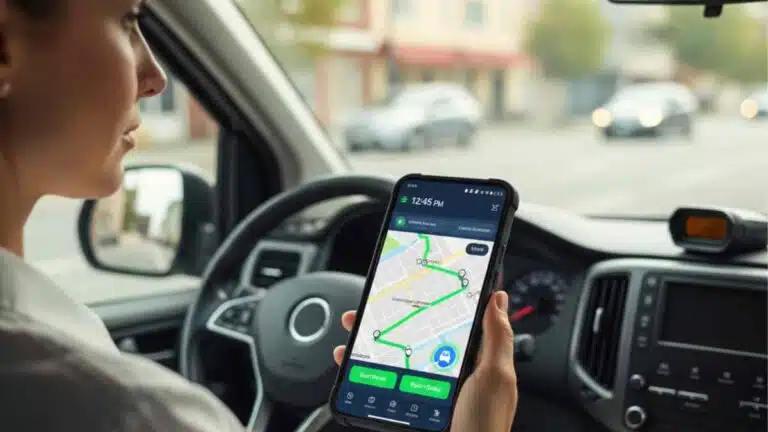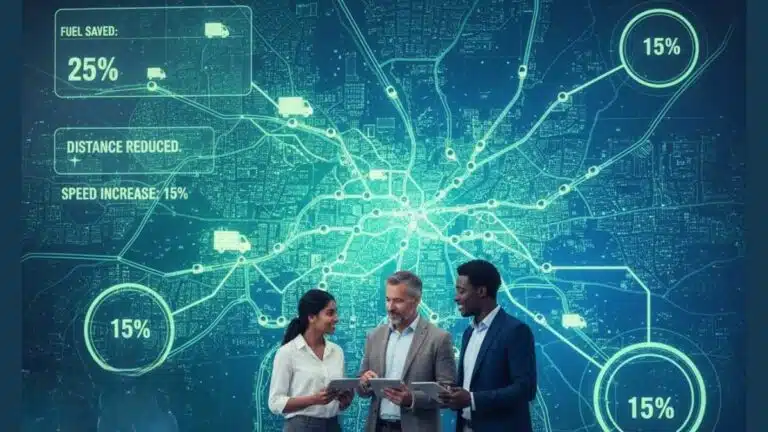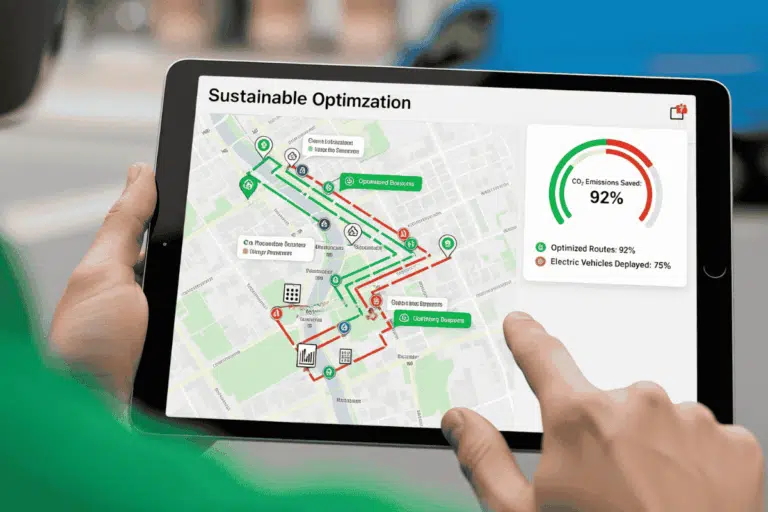Alright, let’s talk about transport management software.
Whether you’re juggling deliveries for your trendy restaurant, a fleet of furniture movers, or a courier service, the right transport management software (TMS) is like having a supercharged dashboard for your entire operation.
Comprehensive and customizable transport software solutions designed for the logistics industry can enhance business operations, streamline processes, and integrate with other systems.
It saves you time, sanity, and potentially thousands in costs. But there’s a catch—not all TMS are created equal.
With so many options on the market, what should you be looking for?
Here’s a breakdown of the five must-have features your TMS should include if you want to keep things running smoothly, delight customers, and get your fleet working smarter (not harder).
And trust me, once you experience these features in action, there’s no turning back.

1. Route optimization: How the right route makes or breaks your day
Picture this: You’ve got a dozen stops to make today, from a big delivery for a corporate office to a grandma waiting for her sofa.
You pull up Google Maps, but after two hours of zig-zagging across town, you realize you’re practically doing laps. Utilizing transportation management software for planning and optimizing the movement of goods could’ve saved you— and your fuel budget. Route optimization is a key feature of such software.
Why route optimization matters
Route optimization isn’t just about picking the shortest path; it’s about calculating the smartest one.
With the right transportation management solution, it provides visibility and optimizes transportation operations by considering traffic patterns, real-time road closures, weather, and even construction. The result? Your deliveries aren’t just on time; they’re lightning fast.
In a TMS, route optimization automatically assigns the most efficient routes to your drivers based on all these factors.
This is huge, especially if your business is in an urban area where a road closure or an unexpected detour can throw off the entire day’s deliveries.
Quick win: You’ll save fuel, reduce wear on your vehicles, and increase the number of deliveries your drivers can complete in a day. Oh, and happier customers? That’s a win, too.

2. Real-time tracking: Why it’s not just about GPS pins anymore
Here’s the scenario: A customer calls, panicking about where their delivery is. They’ve got guests arriving in 20 minutes, and the sofa they ordered? It’s still missing in action.
Transport management systems simplify and automate complex transport movements, providing real-time tracking that gives you (and your customers) the peace of mind to know exactly where that delivery is.
How real-time tracking helps you
Real-time tracking isn’t just a fancy GPS pin bouncing on a map. Today’s TMS goes deeper. With some platforms, you’ll get insights into driver speed, time at each stop, and even the delivery route itself.
For businesses that offer last-mile delivery—think restaurants and couriers—this level of transparency can be the difference between a loyal customer and an angry one.
Even better, real-time tracking lets you keep an eye on things so that you’re always a step ahead. Transportation management systems ensure compliance and real-time information exchange within the complex global trade environment.
You can send ETA updates directly to customers or reroute a driver if they’re running behind. Fewer panicked calls to your customer support line? Yes, please.

3. Proof of delivery: Why you don’t have to play detective
Picture this: The customer swears they never received their delivery. But you’ve got drivers claiming they dropped it off, even snapping a photo.
With proof of delivery built into your TMS system, a comprehensive software solution for managing logistics and transportation processes, you don’t have to play detective.
How proof of delivery works for you
With proof of delivery (POD) functionality, drivers can capture a signature, snap a photo, or even record a timestamp to show exactly when and where the delivery was made.
This is a lifesaver for businesses with high-value goods or customers who frequently question delivery accuracy.
If you’re running a restaurant that does home delivery, imagine how valuable this could be. No more disputed orders; no more “I didn’t get my food” calls at 8pm on a Saturday night.
And in case a dispute does arise, you’ve got concrete evidence at your fingertips, saving you time, hassle, and potential refunds.
Locate2u’s transport management software has the proof of feature. It allows you to capture a customer’s confirmation of a completed booking or delivery.
Pro tip: Look for a TMS that lets customers access their own POD records. That way, they can see that, yes, the couch was delivered at 3:07 pm sharp. Transparency is a winner with customers.
For an integrated digital solution, consider a warehouse management system in conjunction with a transportation management system to optimize logistics and operational efficiency.

4. Inventory management integration: Why It’s a game changer for your business
Let’s set the scene: You’ve just delivered three massive orders to a commercial client, only to find out later that your warehouse is now dangerously low on stock. Inventory management integration can stop those little (or not-so-little) surprises before they snowball.
Why inventory integration saves your sanity
A TMS that integrates with your inventory system keeps you in the know. It allows you to monitor stock levels in real-time and flags potential shortages before they happen.
Transport software enhances this by integrating with other systems and streamlining processes, ensuring seamless operations.
This is especially important if you’re a business owner managing both a physical store and a fleet of delivery vehicles.
Say you’re a restaurant with a delivery service. If your TMS alerts you that you’re running low on a certain dish’s ingredients, you can update your menu, alert your team, or restock. No angry customers discovering their favorite entrée is unavailable after they’ve ordered.
Bonus benefit: By having inventory data and delivery routes on the same platform, you streamline communication between your warehouse team and delivery drivers. It’s an all-in-one logistics ecosystem.
5. Reporting and analytics: Why knowledge is power (and profit)
Let’s be real—gut instincts only get you so far. Transport management systems provide the analytics and insights you need to make informed decisions.
You might feel like your delivery routes are efficient or that customers are happy, but without hard data, it’s all guesswork.
Reporting and analytics give you the concrete numbers you need to back up (or challenge) your assumptions.
How reporting makes you a logistics machine
A solid TMS, integrated with transportation management software, lets you dig into analytics on everything from delivery times to fuel consumption, customer satisfaction, and even vehicle wear.
This data is invaluable when looking to trim costs, boost efficiency, and grow your business. You can pinpoint where drivers are wasting time, figure out which routes are causing delays, and even identify customer satisfaction trends.
Picture this: You’re managing a courier service, and you notice your on-time delivery rate dipped last month.
By examining route and time data, you discover that a particular area has been bogging down drivers. Armed with this insight, you can adjust routes or deploy additional drivers in that zone, keeping everyone happy and your delivery times on point.
Recap: Transport management software is your business superpower
These five features—route optimization, real-time tracking, proof of delivery, inventory integration, and analytics—work together to create a transportation management solution that doesn’t just manage deliveries; it enhances the management of goods movement and improves your entire logistics game.
With route optimization, you cut down on time and fuel, making your fleet leaner and meaner. Real-time tracking means you always know where your goods are (and your customers do, too).
Proof of delivery keeps those “missing item” disputes in check. Inventory integration prevents stock-related surprises. And with reporting, you’ve got data to back up every decision.
Investing in the right transport management software isn’t just an upgrade; it’s the smartest move for a modern-day business owner. Because, let’s face it, in today’s logistics landscape, the businesses that thrive are the ones that use their tools strategically.
So next time you’re combing through TMS options, keep these five features on your radar. It’s not just about choosing software; it’s about selecting a partner in your success.
About the author
Sharl is a qualified journalist. He has over 10 years’ experience in the media industry, including positions as an editor of a magazine and Business Editor of a daily newspaper. Sharl also has experience in logistics specifically operations, where he worked with global food aid organisations distributing food into Africa. Sharl enjoys writing business stories and human interest pieces.




